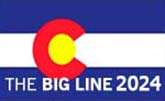
President (To Win Colorado)
See Full Big Line
(D) Kamala Harris
(R) Donald Trump
80%↑
20%

CO-01 (Denver)
See Full Big Line
(D) Diana DeGette*
(R) V. Archuleta
98%
2%

CO-02 (Boulder-ish)
See Full Big Line
(D) Joe Neguse*
(R) Marshall Dawson
95%
5%

CO-03 (West & Southern CO)
See Full Big Line
(R) Jeff Hurd
(D) Adam Frisch
50%
50%

CO-04 (Northeast-ish Colorado)
See Full Big Line
(R) Lauren Boebert
(D) Trisha Calvarese
90%
10%

CO-05 (Colorado Springs)
See Full Big Line
(R) Jeff Crank
(D) River Gassen
80%
20%

CO-06 (Aurora)
See Full Big Line
(D) Jason Crow*
(R) John Fabbricatore
90%
10%

CO-07 (Jefferson County)
See Full Big Line
(D) B. Pettersen
(R) Sergei Matveyuk
90%
10%

CO-08 (Northern Colo.)
See Full Big Line
(D) Yadira Caraveo
(R) Gabe Evans
52%↑
48%↓

State Senate Majority
See Full Big Line
DEMOCRATS
REPUBLICANS
80%
20%

State House Majority
See Full Big Line
DEMOCRATS
REPUBLICANS
95%
5%
 November 09, 2012 10:49 PM UTC
November 09, 2012 10:49 PM UTC 3 Comments
3 Comments
http://nbclatino.com/2012/11/0…
Sportsmen for Responsible Energy Development also praised the decision:
And both Colorado Senators:
For these reports. They are encouraging, to say the least. Your perseverance in staying on top of a much misunderstood subject (mostly because of misleading industry claptrap) and laying it all out for us is much appreciated.